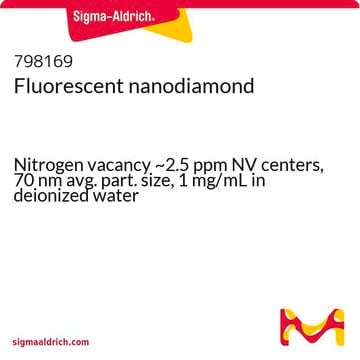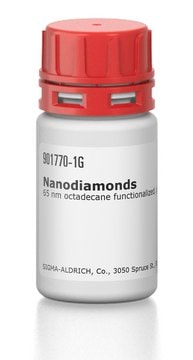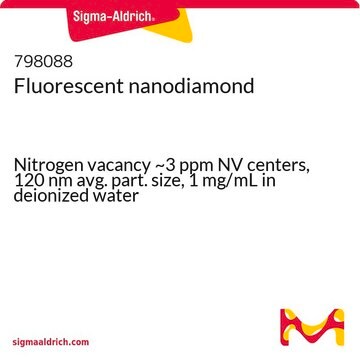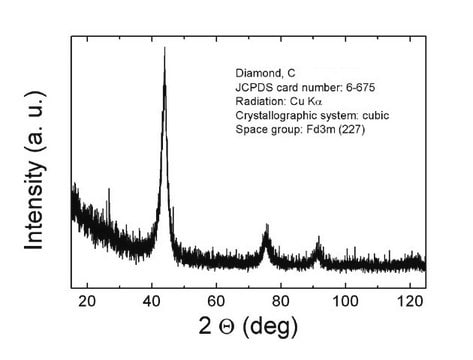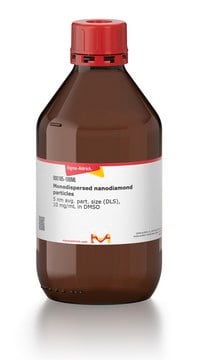901967
Nanodiamonds
65 nm, dodecane functionalized, powder
Synonym(s):
Detonation nanodiamond, Diamond nanoparticles, Nanodiamonds
Sign Into View Organizational & Contract Pricing
All Photos(1)
About This Item
Linear Formula:
C
UNSPSC Code:
12352100
NACRES:
NA.23
Recommended Products
form
nanoparticles
powder
Looking for similar products? Visit Product Comparison Guide
Related Categories
Application
Nanodiamonds (65 nm, dodecane functionalized, powder) is a low-cost nanomaterial that can be produced in a large scale by the controlled detonation of carbon. It can be used for a variety of applications such as supercapacitors, drug delivery, lithium-ion batteries, and catalysis.
Nanodiamonds modified with hydrocarbons exhibit colloidal stability in hydrophobic and non-polar solvents including lithium ion battery electrolytes. Hydrocarbon modified nanodiamonds have also been shown to suppress the dendrite formation in lithium ion batteries.
Storage Class Code
11 - Combustible Solids
WGK
WGK 1
Flash Point(F)
Not applicable
Flash Point(C)
Not applicable
Certificates of Analysis (COA)
Search for Certificates of Analysis (COA) by entering the products Lot/Batch Number. Lot and Batch Numbers can be found on a product’s label following the words ‘Lot’ or ‘Batch’.
Already Own This Product?
Find documentation for the products that you have recently purchased in the Document Library.
Customers Also Viewed
Detonation nanodiamond: an organic platform for the suzuki coupling of organic molecules
Yeap WS, et a.
Langmuir, 25(1), 185-191 (2009)
Functionalized carbon onions, detonation nanodiamond and mesoporous carbon as cathodes in Li-ion electrochemical energy storage devices
Gu W, et al.
Carbon, 53(1), 292-301 (2013)
Detonation nanodiamonds as catalyst supports
Vershinin NN, et al.
Fullerenes, Nanotubes, and Carbon Nanostructures, 19(1-2), 63-68 (2010)
Detonation nanodiamond and onion-like-carbon-embedded polyaniline for supercapacitors
Kovalenko I, et al.
Advances in Functional Materials, 20(22), 3979-3986 (2010)
Xin-Bing Cheng et al.
Nature communications, 8(1), 336-336 (2017-08-26)
Lithium metal has been regarded as the future anode material for high-energy-density rechargeable batteries due to its favorable combination of negative electrochemical potential and high theoretical capacity. However, uncontrolled lithium deposition during lithium plating/stripping results in low Coulombic efficiency and
Our team of scientists has experience in all areas of research including Life Science, Material Science, Chemical Synthesis, Chromatography, Analytical and many others.
Contact Technical Service

